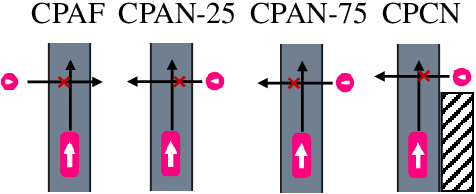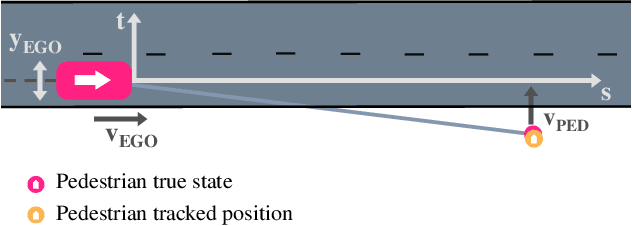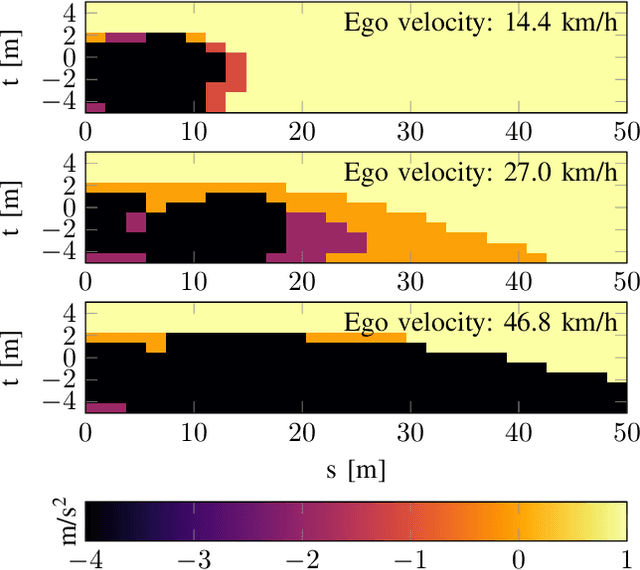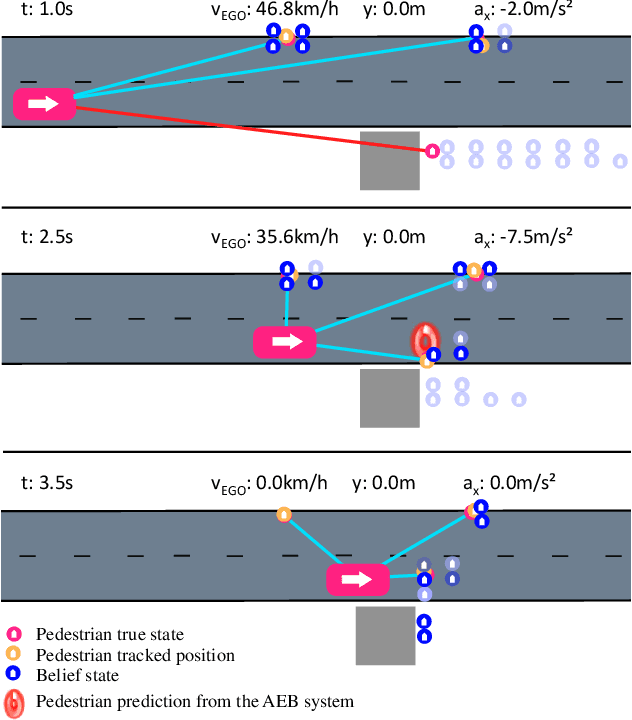Markus Schratter
Dynamic Occupancy Grids for Object Detection: A Radar-Centric Approach
Feb 02, 2024Abstract:Dynamic Occupancy Grid Mapping is a technique used to generate a local map of the environment containing both static and dynamic information. Typically, these maps are primarily generated using lidar measurements. However, with improvements in radar sensing, resulting in better accuracy and higher resolution, radar is emerging as a viable alternative to lidar as the primary sensor for mapping. In this paper, we propose a radar-centric dynamic occupancy grid mapping algorithm with adaptations to the state computation, inverse sensor model, and field-of-view computation tailored to the specifics of radar measurements. We extensively evaluate our approach using real data to demonstrate its effectiveness and establish the first benchmark for radar-based dynamic occupancy grid mapping using the publicly available Radarscenes dataset.
Pedestrian Collision Avoidance System for Scenarios with Occlusions
Apr 25, 2019



Abstract:Safe autonomous driving in urban areas requires robust algorithms to avoid collisions with other traffic participants with limited perception ability. Current deployed approaches relying on Autonomous Emergency Braking (AEB) systems are often overly conservative. In this work, we formulate the problem as a partially observable Markov decision process (POMDP), to derive a policy robust to uncertainty in the pedestrian location. We investigate how to integrate such a policy with an AEB system that operates only when a collision is unavoidable. In addition, we propose a rigorous evaluation methodology on a set of well defined scenarios. We show that combining the two approaches provides a robust autonomous braking system that reduces unnecessary braking caused by using the AEB system on its own.
* 7 pages; 8 figures
 Add to Chrome
Add to Chrome Add to Firefox
Add to Firefox Add to Edge
Add to Edge